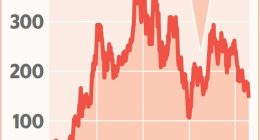A NEW Government scheme will let first-time buyers struggling to secure a mortgage get on the property ladder with just a 5% deposit.
It means under the mortgage guarantee programme, house buyers will need just a £10,000 deposit to be able to afford a £200,000 home.
? Read our Budget 2021 live blog for the latest news & updates
Many lenders scrapped such high loan to value mortgage deals amid fears and uncertainty over how the coronavirus crisis would impact jobs and the economy.
The move has locked many young buyers out of the property market as they compete with a surge in house prices that outstrips wages.
A handful of lenders, including NatWest and Lloyds, have recently brought back deals that require buyers to have a 10% deposit, but for many they still can’t afford to buy.
The Prime Minister mentioned the scheme at the virtual Conservative party conference last year, when he outlined his plans to turn “generation rent” into “generation buy”.
But the programme is expected to be officially unveiled by the Chancellor in the Budget on Wednesday.
Personal finance expert at Moneyfacts.co.uk Eleanor Williams said that while it would be a great opportunity for first-time buyers, it should only be rolled out to those who can afford the repayments.
She said: “It would need to be rolled out in a way that ensures the risks of taking on a low-deposit mortgage are considered carefully, does not undermine the positive impact the mortgage market review had on responsible lending practices, and also makes certain that the supply of affordable housing is there to meet the demand.”
How much deposit will I need under the scheme?
The scheme will enable buyers to take out a mortgage worth 95% loan to value (LTV), meaning only a 5% deposit is needed.
Currently, there are only a handful of 5% deposit mortgages available, pushing up costs for buyers who are more likely to get a deal with a 10% deposit or bigger.
Under the scheme, the Government will guarantee part of borrowers home loans, reducing the risk on the loans.
It means that if the borrower is unable to pay one month, the state will pick up the bill – although it is highly likely there will still be repercussions for borrowers if this happens.
The scheme would slash the minimum amount first-time buyers need to purchase their first homes in half.
For example, a 10% deposit for £300,00 home is worth £30,000 but under the programme buyers would need just £15,000 for a deposit worth 5%.
On a £400,000 house, buyers would need to fork out £20,000 compared to £40,000, or £25,000 instead of £50,000 on a £300,000 home.
The scheme will run for properties worth up to £600,000, which would see the minimum deposit required lowered from £60,000 to £30,000.
But while the scheme will help those struggling to scrape a deposit together, buyers will still need to earn a certain amount to be able to borrow a big enough mortgage.
Lenders will typically loan borrowers up to four times their salary.
So to buy a £600,000 house with a 5% deposit, you’d need to have an income – or combined income – of £135,000 a year.
Here’s what else can affect how much you can borrow.
What other moving costs are there?
There are a whole host of other costs you need to think about when buying a home, besides the deposit and mortgage.
Research by online lender MYJAR found buyers can expect to spend an extra £4,000 on top of the costs of their new property.
This is to cover costs such as surveys, legal fees, and other removal costs.
The true cost of moving house
THIS is the true cost of moving home, according to the MYJAR survey:
- Legal fees – £1,614.27
- Removal companies – £272
- House removal insurance – £14.35
- Decorating previous home – £331.28
- Mortgage valuation – £209.44
- Property surveyors – £318.64
- Energy performance certificate – £25.09
- Storage per month – £12.71
- Cleaning previous home – £34.52
- New furniture – £991.58
Fortunately, first-time buyers don’t have to pay stamp duty on property worth up to £500,000, thanks to the Chancellor’s land tax holiday.
However, this is due to end on March 31, unless Mr Sunak announces a short extension in his Budget.
Even when the holiday ends, first-time buyers are still exempt from paying stamp duty on the first £300,000 of a property value.
On more expensive properties, buyers will need to factor in the cost of stamp duty.
How much you pay depends on the property value as it goes up in increments.
For example, you pay nothing if the property costs below £125,000, 2% on the portion worth between £125,001 and £250,000 and 5% on the value between £250,001 and up to £925,000.
What other schemes are available?
The mortgage guarantee scheme isn’t the only programme available to first-time buyers. Here are a few others you can take advantage of today:
Help to Buy Isa
A Help to Buy Isa a tax-free savings account where for every £200 you save, the government will add an extra £50.
What is stamp duty?
STAMP duty land tax (SDLT) is a lump sum payment anyone buying a property or piece of land over a certain price has to pay.
Up until July 8, most house-buyers in England and Northern Ireland had to pay stamp duty on properties over £125,000.
This was temporarily increased to £500,000 until March 31, 2021 in the government’s mini-Budget in July 2020.
The rate a buyer has to fork out varies depending on the price and type of property.
Rates are different depending on whether it is residential, a second home or buy-to-let, or whether you’re a first-time buyer.
The usual system in England for residential properties means:
- First-time buyers pay nothing on properties below £300,000 (and relief available on properties of up to £500,000)
- You pay nothing if the property costs below £125,000
- You pay 2% if it is worth between £125,001 and £250,000
- You pay 5% if between £250,001 and up to £925,000
- You pay 10% if it is between £925,001 and £1.5million
- You pay 12% on anything over £1.5million
For second homes or buy to let properties:
- 3% on purchases up to 125,000
- 5% on purchases between £125,001 and £250,000
- 8% on purchases above £250,001 and £925,000
- 13% on purchases above £925,001 and £1.5 million
- 15% on purchases above £1.5 million
But there’s a maximum limit of £3,000 which is paid to your solicitor when you move.
These accounts have now closed to new applicants but those who already hold one have until November 2029 to use it.
Help to Buy equity loan
Under the Help to buy equity loan scheme, the Government will lend you up to 20% of the home’s value – or 40% in London – after you’ve put down a 5% deposit.
The loan is on top of a normal mortgage but it can only be used to buy a new build property.
The scheme will be replaced with another one with the same name on April 1, 2021 – and it’s already opened for applications.
Under the old scheme, the property value had to be worth less than £600,000 to be able to qualify for a loan.
But loans under the new scheme will be capped at 1.5 times the average first-time buyer property price by region in England.
This is to stop already wealthy first-time buyers using the scheme to purchase bigger homes.
Lifetime Isa
A Lifetime Isa is another Government scheme that gives anyone aged 18 to 39 the chance to save tax-free and get a bonus of up to £32,000 towards their first home.
You can save up to £4,000 a year and the government will add 25% on top.
Shared ownership
Co-owning with a housing association means you can buy a part of the property and pay rent on the remaining amount.
You can currently buy anything from 25% to 75% of the property but you’re restricted to specific ones.
Meanwhile, the government plans to allow home buyers to get on the ladder by purchasing just 10% of the property in future.
First Homes pilot
Boris Johnson last year revealed a new affordable housing plan, which is set to include a 1,500 unit pilot of “First Homes”.
These will be no different from other properties except they will be sold to first-time buyers with a discount of 30%.
They will be sold to local people who want to stay in the community where they live or work but are struggling to buy a home at market prices.
The Government is still consulting on the final design of the First Homes scheme though, so it’s yet to release more details.
Are you a first-time buyer keen to get on the property ladder? Check out our guide.
This post first appeared on thesun.co.uk




















